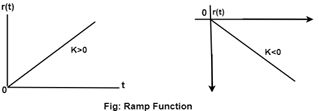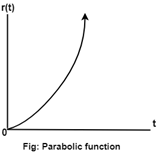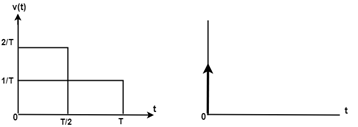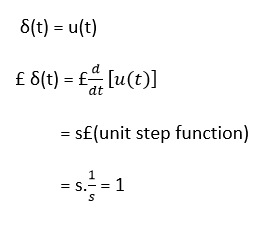Transient and Steady State Analysis of Linear Time Invariant (LTI) SystemsTime Response AnalysisWhen the energy state of any system is disturbed, and the disturbances occur at input, output or both ends, then it takes some time to change from one state to another state. This time that is required to change from one state to another state is known as transient time and the value of current and voltage during this period is called transient response. Depending upon the parameters of the system, the transient may have oscillations which may be either sustained or decaying in nature. Thus time response of a control system is divided into two parts-
Transient State response It deals with the nature of the response of a system when subjected to an input. Steady State Analysis It deals with the estimation of the magnitude of steady-state error between input and output. Different Type of Standard Test Signals The various inputs or disturbances affecting the performance of a system are mathematically represented as a standard test signal.
NOTE
Characteristics of Time-domain Analysis
Transient Time: The time required to change from one state to another is called the transient time. Transient Response: The value of current and voltage during the time change is called transient response. 
So, we can say that the transient response is the part of the response which goes to zero as time increases and the steady-state response is the part of the total response after transient has died. If the steady-state response is the part of the output does not match with the input then the system has a steady state error. Test input signal for transient analysisFor the analysis of the time response of a control system, the following input signals are used. Step Function
A unit step function is denoted by u(t) and is defined as Laplace Transform: 
Step function is also called displacement function. If input is R(S), then R(s) = 1/s Ramp Function
This function starts from the origin and linearly decreases or increases with time as shown in the figure above. Let r(t) be the ramp function then Where 'K' is the slope of the line, for a positive value of 'K' the slope is upward, and the slope is downward for the negative value of 'K.' Laplace transform 
Parabolic Function
The value of r(t) is zero when t<0 and is a quadratic function of time when t>0. Where 'K' is constant for unit parabolic function K = 1. The unit parabolic function is defined as Laplace Transform 
Impulse Function
A unit impulse function is defined as 
Thus we can say that impulse function has zero value everywhere except at t=0 where the amplitude is infinite. 
Next TopicTime Response of first order system
|
 For Videos Join Our Youtube Channel: Join Now
For Videos Join Our Youtube Channel: Join Now
Feedback
- Send your Feedback to [email protected]
Help Others, Please Share









